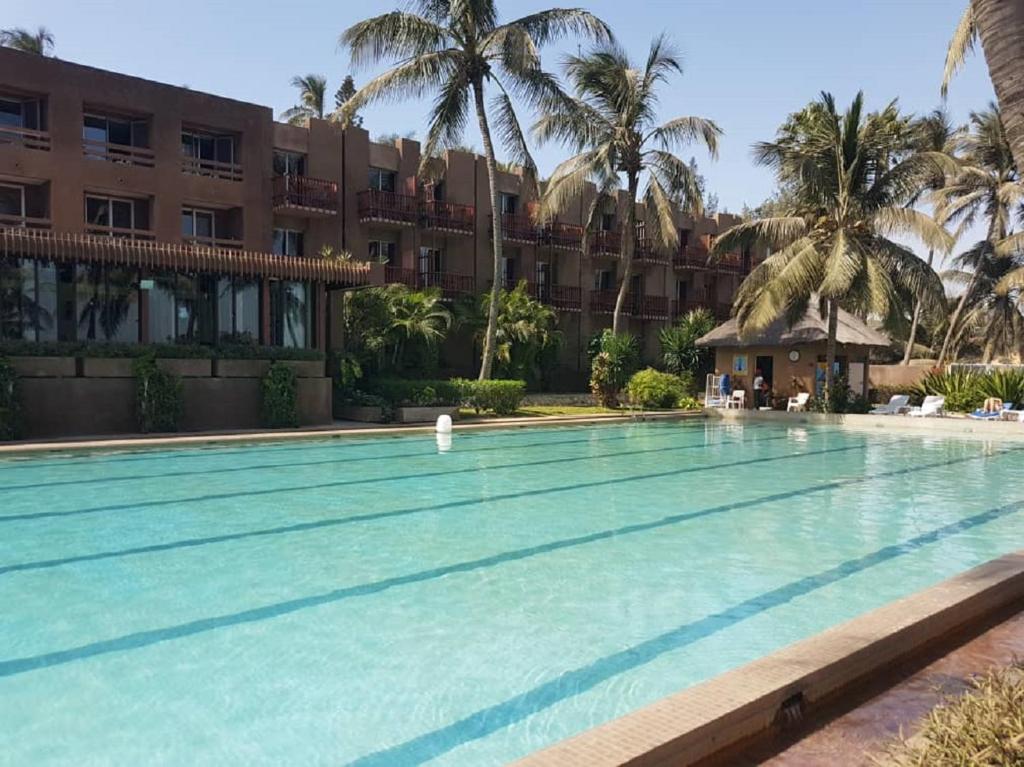Parainvest Signals Tourism-Driven Capital Reallocation
Parainvest’s CFAF 10.5b Savana acquisition marks domestic rotation into yield assets as EURUSD=X-anchored stability and BZ=F terms-of-trade support valuations; watch ADR, occupancy, EBITDA margins, and hotel-debt spreads versus regional sovereigns.

Parainvest’s CFAF 10.5 billion (~USD 17 million) acquisition of Senegal’s Savana Hotel is a clear signal that domestic institutional capital is rotating from sovereign paper into real-economy yield. The purchase, confirmed by a Dakar Commercial Court ruling on 10 October 2025, ends a contested liquidation and installs a local owner prepared to absorb operational risk for cash-flow upside. Within WAEMU’s euro-pegged regime, where the BCEAO policy rate stands at 3.25% and the corridor top at 5.25%, fixed-income returns have compressed, pushing balance sheets toward assets capable of delivering inflation-hedged income and revaluation optionality.
Macro conditions support the pivot. Senegal’s growth is projected near 8.0% in 2025 as hydrocarbons ramp and services normalize, while annual inflation printed 2.6% in September and has re-anchored around a 2–3% corridor. The euro peg stabilizes the exchange rate via EURUSD=X pass-through, curbing imported price shocks and extending planning horizons for capex-heavy sectors. Fiscal risks remain material after revisions widened the 2025 fiscal deficit to roughly 7.8% of GDP, but the policy focus has shifted to crowding in private capital to relieve the sovereign balance sheet. With regional 10-year CFAF yields around 5.5–6.0% and real yields narrow, a functioning hotel can credibly price 200–400 basis points above the curve, making hospitality a rational destination for domestic allocators seeking duration and carry.
The investment mechanism is disciplined rather than speculative. Savana is a distressed, brand-recognizable asset in a recovering market. Upper-segment average daily rates in Dakar cluster around USD 150–170, with occupancy trending 60–70% as international traffic normalizes. A refurbishment that lifts RevPAR by 15–20% and stabilizes occupancy near 70% can support an internal rate of return north of 11% even if local borrowing costs sit at 8–9%. Capex focused on rooms, F&B mix, and energy efficiency can widen EBITDA margins by 300–400 basis points, particularly if management secures a branded operating agreement with performance-based fees. Relative to BCEAO corridor yields, the acquisition premium compensates for operating volatility while preserving upside from revaluation toward replacement cost.
Sector transmission extends beyond a single asset. Tourism directly and indirectly supports several hundred thousand jobs and a mid-single-digit share of GDP. A functioning hotel catalyzes local supply chains in construction, food logistics, transport, and business services, with employment multipliers often above 1.5x per invested dollar. On the external account, higher service exports diversify FX inflows beyond hydrocarbons, cushioning terms-of-trade swings when Brent (BZ=F) drifts. If three to five similar repositionings close over the next 18 months, incremental tourism receipts could add 0.3–0.5 percentage points to annual GDP growth in 2026–2027, with limited pressure on fiscal space.
Capital-market effects are visible in pricing logic. A domestic buyer stepping into distressed hospitality compresses the perceived gap between sovereign yields and institutional real-asset yields. That creates optionality to securitize stabilized hotel cash flows or list REIT-like vehicles on the regional exchange once a small pool demonstrates predictable NOI. For banks and insurers, seasoned hotel debt with DSCR covenants diversifies loan books away from public-sector concentration. For policymakers facing a 7–8%-of-GDP deficit, each private refurbishment that lifts taxable income and formal employment eases consolidation without currency risk.
Risks are concentrated but measurable. A sharper BCEAO tightening cycle would raise debt service and could force a deferral of non-core capex. Cost inflation for imported materials and energy could compress margins; without energy-efficiency retrofits, EBITDA remains sensitive to power tariffs. Operational execution risk is non-trivial given scarce upper-upscale management capacity. Exogenous shocks—Sahel security, adverse weather, or a European demand dip—would hit occupancy first. Governance discipline therefore matters: ring-fenced SPVs, step-in rights for lenders, and KPI-linked operator fees reduce downside while preserving equity optionality.
The economic signal is structural: domestic liquidity is migrating from passive savings into productive ownership, broadening Senegal’s capital formation beyond the sovereign. Verification over the next 12–24 months is numeric and time-bound. Track ADR growth and occupancy stabilization at Savana; monitor cash-conversion cycles and EBITDA margin expansion post-capex; watch the spread between hotel-backed debt and regional sovereigns; and observe whether additional domestic acquisitions clear at similar or tighter yields.
In parallel, macro markers should hold within a credible band—headline inflation near 2–3%, growth around 8%, orderly peg conditions implied by low FX volatility via EURUSD=X, and manageable terms-of-trade sensitivity through BZ=F correlations. If these print, the Parainvest transaction will read not as an isolated bargain but as the opening of an institution-grade hospitality curve for West Africa.





